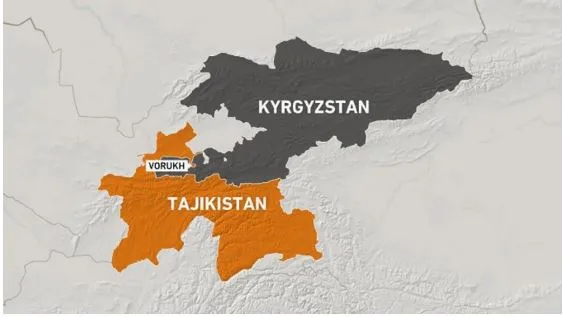

22nd March 2025 (35 Topics)
Context
After 33 years of dispute, Kyrgyzstan and Tajikistan have finally demarcated their entire border, ending one of post-Soviet Eurasia’s longest-running conflicts. The historic March 13 agreement resolves violent territorial disputes, reopens trade routes, and establishes water-sharing mechanisms—critical for regional stability.
Why Was the Border Disputed?
- Soviet-Era Border Problems
- The Soviet Union’s mapmaking in Central Asia created artificial borders without considering ethnic, cultural, or water-resource realities.
- Villages were split between nations, water sources crossed borders, and nomadic traditions were disrupted.
- When the USSR collapsed in 1991, these administrative lines became national borders, leading to disputes.
- The Ferghana Valley – A Conflict Hotspot
- Ferghana Valley, shared by Kyrgyzstan, Tajikistan, and Uzbekistan, is densely populated and has a history of ethnic and resource tensions.
- Over 150 border clashes occurred in the past decade, mostly over water access and land disputes.
Key Provisions of the Treaty
- Finalized Border Demarcation: The entire 1,006-km (625-mile) border is now officially recognized. 520 km was settled in 2011, and the remaining 486 km were negotiated over the last three years.
- Reopening Trade & Crossings: The Kyzyl-Bel and Kairaghach checkpoints, closed since 2021, have reopened. Cross-border trade, which fell from USD 12 million (2023) to USD 1.7 million (2024), is expected to rise to USD 500 million by 2030. New flight routes, like Dushanbe-Tamchi, will boost economic and cultural ties.
- Water-Sharing Agreement: A bilateral commission will jointly manage the Isfara River Basin, a previous source of conflict.
- Climate change has shrunk glaciers feeding the Ak Suu/Isfara River by 17% since the 1950s, making water management crucial for both nations.



